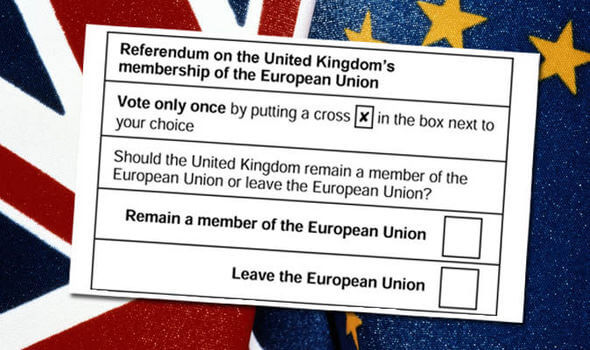By Iain Begg
Two recent assessments of the economics of Brexit, from the Treasury and a new group calling itself Economists for Brexit, come to diametrically opposed conclusions. They add to an array of claims and counter-claims, many of which come up with apparently firm predictions, but have subtle differences that make direct comparisons difficult. Voters are entitled to be confused and to wonder whether anyone can be believed.
The Treasury study can be interpreted as representing the government standpoint. George Osborne, the Chancellor of the Exchequer, quoting from the lengthy analysis by his officials of the likely long-term impact of leaving the EU, tells us that the average household would be worse off by £4,300. The figure is the mid-point of a range of estimates based, in turn, on three different scenarios about how the UK’s trade relationship with the EU would evolve after a Brexit. The underlying projection is that GDP would be 6.2 percent lower and the headline figure is obtained by dividing that GDP loss by the number of households.
The Chancellor is flatly contradicted by the new group who argue that ‘Brexit will result in a better economic outcome than remaining in the EU’. They do not provide the same sort of precise figure as the Chancellor, but one of its members, Patrick Minford, refers in the new document to a previous analysis published in 2015 in which he and his co-authors ‘identified 3.2-3.7 percent of GDP in ongoing costs’ of continuing membership of the EU. They also point to potentially very dramatic longer term negative effects on UK GDP, resulting from what they portray as the looming threat of unfunded pension commitments in many core EU countries.
To understand how such different answers can be arrived at for ostensibly the same question, it is important to look both at the methodologies employed and the nature of the assertions made. It is routine for economists to use sophisticated models to generate projections of future developments in the economy. Typically, these models rely on a range of assumptions about what would happen in the absence of whatever change is under discussion. This ‘counterfactual’ is then used as the benchmark against which to assess how the change will affect the economy.
In the Treasury exercise, the main focus is on how trade enhances GDP and they use a technique often used by applied economists for this purpose – the ‘gravity’ model – which starts from the empirically well-founded proposition that trade will be more intense between countries geographically close to one another. Key assumptions are that the UK maintains its access to non-EU markets, but has diminished access to the EU, that there is a reduction of foreign direct investment into the UK and that there is a diminution of competitive pressures which results in slower UK productivity growth. These can be considered reasonable assumptions.
The three scenarios examined by the Treasury are:
- what has become known as the Norway/EEA model, despite it having been rejected by the Prime Minister, in which the UK largely retains access to the European single market
- the bilateral trade model in which a trade deal between the UK and remainder of the EU is negotiated, as is the case today for the EU with Turkey and with Canada
- the WTO model in which the UK has the same access to the EU market as other members of the World Trade Organization, one consequence would be tariffs on some UK exports
According to the Treasury projections, UK GDP would be lower than it would otherwise be by 2030 under all of these scenarios, but least under the first model and most in the WTO variant. In each case they present a range, reflecting differing assumptions about the intensity of the effects on key outcomes, such as on productivity. In all cases, because GDP is lower, there is a negative effect on tax revenue which means that the public finances deteriorate by much more than the gain from the UK no longer having to pay towards the EU budget.
The approach of the eight ‘Brexeconomists’ is to assess a range of effects on UK economic prospects, including regulation, the trade regime, immigration, the position of the City of London and the public finances. The part of their analysis which is most directly comparable with the Treasury projections is in a chapter which uses the University of Liverpool ‘rational expectations’ model to assess the effects of Brexit. Such models assume that economic actors adapt quickly to the new environment and, as a consequence, can rapidly exploit new opportunities. Key assumptions are that prices fall, benefiting consumers, there is a windfall gain from lower regulation and there is an immediate gain to the public finances from no longer having to contribute to the EU budget.
Questions also arise about the numbers being quoted and how they are ‘spun’. In the Treasury projections, the headline figure of a loss of £4,300 is criticised for being ‘per household’, when it is not a measure of household income and for implying (though it was never actually said) that people will be worse-off. It is more common to refer to GDP per head of population, but despite what some critics have argued – see, for example, Andrew Neil’s entertaining interrogation of a Minister – there is nothing intrinsically wrong with using households. Clearly, though, the latter results in a higher headline figure for the simple arithmetical reason that the aggregate loss is divided by a smaller number: the equivalent figure for GDP per capita is £1,800.
Because the ‘loss’ projected by the Treasury is relative to what would have happened and GDP would be expected to rise by perhaps 2 percent per year, taking it to 30 percent higher by 2030, the effect of Brexit would be to lower it to 27 percent higher in the best case and just 20 percent higher in the worst case.
Similarly, the 4 percent gain projected by the Economists for Brexit would mean boosting GDP growth to 34 percent by 2030. However, the economists provide only limited evidence to back their claims, some of which rely more on assertion than on hard data. For example, while recognising that there could be threats to London’s pre-eminence in financial services, they quickly dismiss them even though the City itself has repeatedly stressed the risks. The report also states that the deregulation that will follow a Brexit is modelled as ‘a fall in the employer rate of national insurance by 2%’. Even if is accepted that some forms of regulations will change, there is no explanation for why it should be worth this amount.
In summary, both reports are only as good as the assumptions they make and the real question voters should ask themselves is ‘are these assumptions credible’. Those of the Treasury are at least broadly in line with many other assessments; those of the ‘Brexeconomists’ will raise more eyebrows. Even so, the Chancellor’s highlighting of a loss of £4,300 is misleadingly precise.
The opening sentence of the Economists for Brexit paper states that ‘a lot of economic nonsense has been talked so far in the Brexit debate’. Indeed; but the bad news is that much more will follow before June 23.











